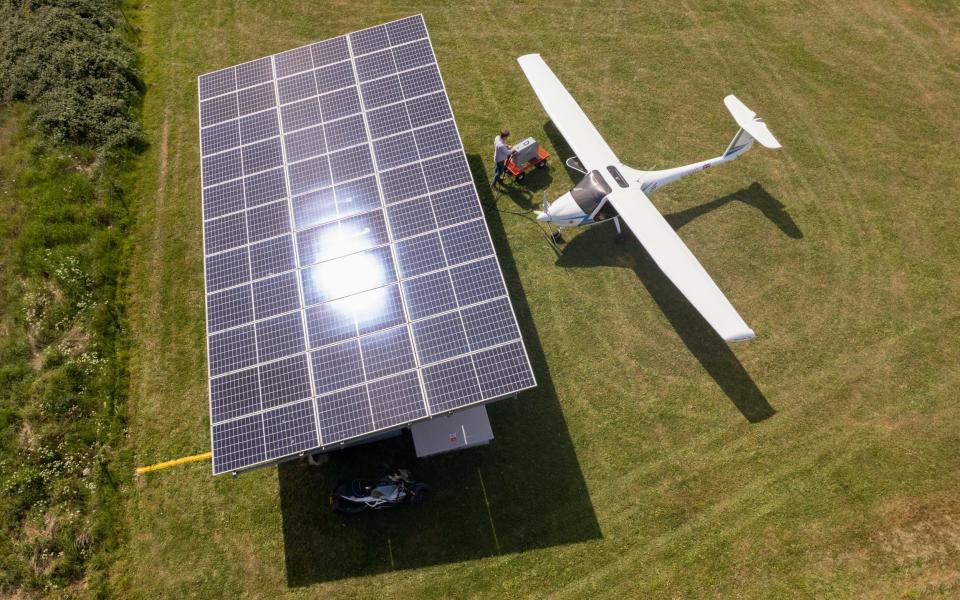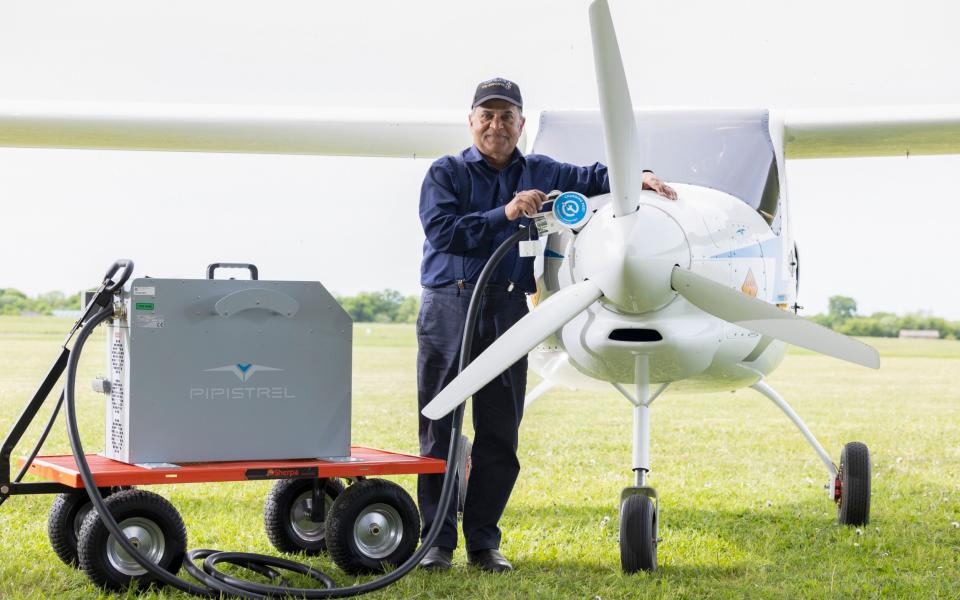Britain’s first fully solar-powered plane takes off

Britain’s first fully solar-powered aircraft has taken off, as pilots say they no longer want to fly planes powered by fossil fuels.
An electric plane charged by off-the-grid solar panels took off on its first journey on Thursday to show that aircraft can be powered entirely by solar energy.
The first flight from Old Buckenham Airfield in Norfolk lasted less than half an hour, with the aircraft circling the airfield and passing over the nearby town of Attleborough. Its battery allows it to fly for one hour.
NEBOair, the aviation company launching the flights, said it had been approached by pilots no longer ethically comfortable with flying conventional jet-fuelled planes.

Kerry Wilmott, NEBOair’s director of project and infrastructure management, said: “We were approached by pilots, many of whom had become CEOs and founders of ‘green’ companies, who stated that due to their values changing they felt they could no longer continue to fly in traditional ‘fuel-driven’ aircraft and comfortably reflect their business ethics.”

Matt Wilkins, Civil Aviation Authority accountable aerodrome manager at Old Buckenham Airfield and adviser for solar stations on airfields, said: “Even in the UK, many smaller airfields are in remote locations with limited power supply, and where there is power it’s often not in the right place to charge aircraft.
“We are placing the charging stations as close as is safely possible to airfields - to reduce taxiing time and energy wastage.
“But there are many safety factors to consider like making sure the position and angle of solar panels wouldn’t ever dazzle pilots with the sun’s reflection.
“This is the first of six initial installations. This will be the future for aviation - it allows power without connection to the outside world.”

 Yahoo News
Yahoo News 
